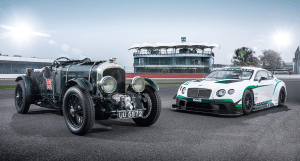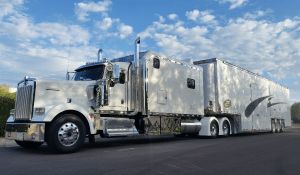Porsche announced Porsche is increasing production of its Porsche Taycan, following a strong demand for the electric sports car. In addition to its performance, the fully electric Porsche Taycan sets the scene for tomorrow through its design and technology, providing answers to questions about sports cars in the future. All this means that the new Taycan is not only a great EV, but also an authentic Porsche, well worthy of its spot on your new-car shopping list. Porsche is fully electric hatchback is fast, nimble, and genuinely fun to drive, plus it rides well.
The Porsche Taycan has a dual-speed transmission, allowing Porsche to get it up to blazing speeds, and also reach high top speeds (both of which were a strength of Porsches marketing right off the bat). The rear-mounted unit produces 449 hp and 406 pound-feet of torque (or 450 pound-feet at the time of Taycan Turbo Ss launch), sits parallel and to the axis centreline, sending power forward via the Porsche-designed and built two-speed transmission. The Porsche Taycan is powered by two PSM continuously-excited, synchronous electric motors, one at each axle, and all four wheels are controlled separately via Porsches Torque Vectoring System. The Porsche Taycan uses a new all-wheel-drive, battery-electric drivetrain, with a permanent-magnet synchronous motor on each axle.
For supreme driving dynamics, two permanent-magnet synchronous motors are installed in the new Porsche Taycan and Taycan S, with its performance-rated 93kWh Plus battery integrated deep into the sub-body. The Taycan 4S adds one additional electric motor at the front axle to enable four-wheel drive, and gets slightly more power (but the same battery). First up is the regular Taycan, which is rear-wheel drive with the 79kWh battery strapped between its two axles. There is also an array of high-tech electric systems designed to make the Porsche Taycan one of the more fun-to-drive EVs out there.
Sure, all of the Taycans new electrical gadgetry may share more with what you will find hidden beneath the skin of the Tesla Model S than it does with a Porsche 911, but the slinky Porsche Taycans body leaves little doubt that it is an electric vehicle designed to convert volts into pure speed. Sure, the sheer size of the new Taycan means that it cannot fight a set of hairpins as vigorously as a 911, but the Porsche Taycans composure in the squirming turns makes even the most capable Turbo S look a little jealous. It might not be quite as groundbreaking as the Taycan Turbo S was when it debuted (the two actually share a fair number of design elements), and it might not match up to the S in terms of pure performance on paper, but it is merely an indication of just how convincing of a machine Porsche has built a Cayenne. From how each of the Taycans is controlled, to the way it rides, it is recognizable as Porsche in its approach to dynamics — just for the new age.
That Porsche is designing the Taycan to repeat that jerk off launch control about ten times over – something you certainly cannot do with other electric cars – helps reinforce the Taycans credentials as a dream car. Porsche wants the Taycan to deliver a more clean driving experience, one in which drivers can let go of the accelerator and coast, as they would any other Porsche. To drive this point home, Porsche points us to the above video, which shows a Taycan going from nil to 124mph (the cars top speed is 160mph, in case you are curious).
The company is also stressing that Porsches first-ever fully electric vehicle completed a 24-hour endurance race on Italys high-speed Nardo Circuit, and that, despite the up-to-108-degree Fahrenheit air temperature, and the fact the car had to be recharged throughout its more than 2,100-mile journey, the Taycan achieved an average speed of 89 mph. On August 26, 2019, Porsche revealed that the Taycan had completed one lap of the Nurburgring Nordschleife in 7 minutes 42.34 seconds. Car and Driver conducted 15 consecutive quarter-mile runs of both the Taycan Turbo S and 2020 Tesla Model S Performance in order to assess German automaker Porsches claims that its cars performance holds even when its batteries are depleted.
Although spy photos of a test Taycan were available from October 2017, Porsche decided to reveal a disguised vehicle via photos and video on 19 May 2018. It was enough to give quite good initial impressions of the Taycan, which was initially announced as a concept vehicle called Mission E way back in 2015, a few days after the news broke about Volkswagens Dieselgate scandal, of which Porsche was part. It is going to be a long time before we know if the Taycan has made it or not, both for Porsche and for the larger Volkswagen group.
The grip is firm, and the 4S often feels lighter than its actual curb weight under most circumstances; Porsches PS1,052 torque vectoring Plus system works in conjunction with the electric motors to assist with turning the car. Porsche does not just rely on mechanical adhesion, because the Taycans have the active suspension management of the Porsche is, which is constantly working in the background, adjusting the damping. While all the well-known Porsche brake systems are available (steel, coated, carbon) for Taycan, driving tests showed about 90% of daily braking is done with an electrically assisted mechanism.












